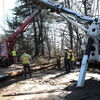Processing Your Payment
Please do not leave this page until complete. This can take a few moments.
- News
-
Editions
-
- Lists
-
Viewpoints
-
Our Events
-
Event Info
- Women's Leadership Forum 2025
- On the Road with Mainebiz in Bethel
- Health Care Forum 2025
- On The Road with Mainebiz in Greenville
- On The Road with Mainebiz in Waterville
- Small Business Forum 2025
- Outstanding Women in Business Reception 2025
- On The Road with Mainebiz in Bath
- 60 Ideas in 60 Minutes Portland 2025
- 40 Under 40 Awards Reception 2025
- On The Road with Mainebiz in Lewiston / Auburn
- 60 Ideas in 60 Minutes Bangor 2025
Award Honorees
- 2025 Business Leaders of the Year
- 2024 Women to Watch Honorees
- 2024 Business Leaders of the Year
- 2023 NextUp: 40 Under 40 Honorees
- 2023 Women to Watch Honorees
- 2023 Business Leaders of the Year
- 2022 NextUp: 40 Under 40 Honorees
- 2022 Women to Watch Honorees
- 2022 Business Leaders of the Year
-
-
Calendar
-
Biz Marketplace
- News
-
Editions
View Digital Editions
Biweekly Issues
- April 21, 2025 Edition
- April 7, 2025
- March 24, 2025
- March 10, 2025
- Feb. 24, 2025
- Feb. 10, 2025
- + More
Special Editions
- Lists
- Viewpoints
-
Our Events
Event Info
- View all Events
- Women's Leadership Forum 2025
- On the Road with Mainebiz in Bethel
- Health Care Forum 2025
- On The Road with Mainebiz in Greenville
- On The Road with Mainebiz in Waterville
- + More
Award Honorees
- 2025 Business Leaders of the Year
- 2024 Women to Watch Honorees
- 2024 Business Leaders of the Year
- 2023 NextUp: 40 Under 40 Honorees
- 2023 Women to Watch Honorees
- 2023 Business Leaders of the Year
- + More
- 2022 NextUp: 40 Under 40 Honorees
- 2022 Women to Watch Honorees
- 2022 Business Leaders of the Year
- Nomination Forms
- Calendar
- Biz Marketplace
The Maine Housing Crunch: Construction costs rise across the board
 Photo / Fred Field
Matt Masse, vice president of purchasing at Belgrade-based Hammond Lumber, says he’s never seen materials rise at the “velocity” seen currently.
Photo / Fred Field
Matt Masse, vice president of purchasing at Belgrade-based Hammond Lumber, says he’s never seen materials rise at the “velocity” seen currently.
The Szanton Co., a Portland-based developer, has a housing project in Bath that will take 19 months to construct, up from a planned timeline of 12 to 13 months.
The reason: lack of available labor.
“Costs are 30% over budget, so we have to find more sources of funding or find areas to cut,” says Amy Cullen, Szanton Co.’s vice president and project partner.
“The biggest issue in 2022 is the lack of workforce to build the housing. We need sheet-rockers, masons, carpenters. Construction costs are going through the roof. Material costs, the lack of availability of labor, all relates to the overall price tag,” Cullen says.
The complaints are the same, whether it’s affordable housing, workforce housing or luxury units: labor costs on projects have surged about 30% in the past year and material costs are up 25% to 30% for building necessities such as lumber, window, steel. Time delays also add to costs as the delivery of materials can now be an extra four to five months.
Roccy Risbara, president of Scarborough-based Risbara Bros. Construction, which is redeveloping the old Scarborough Downs, says a semi-custom home that used to take five months to complete is now a 10-month timeline. He blames the struggles in getting labor and materials.
Risbara says his 54-year-old construction firm has had to scramble to buy whatever materials it can get, whenever they can get them, rather than ordering materials on-demand for each project. That means warehousing supplies, which adds to the costs.
“Material prices are extremely high and that’s if you can even get them. It used to be cabinets, now it’s appliances. You can’t get a refrigerator in this country right now,” Risbara says.
“Never in my career have I seen such velocity of price increases and the market’s ability to absorb them,” says Matt Masse, vice president of purchasing at Hammond Lumber in Belgrade.
Lumber and plywood prices have been volatile, influenced by commodities trading, international tariffs and labor that’s been constrained by COVID protocols in Canadian and other producing nations. Doors, windows and flooring have extended lead times for delivery due, in part to labor to produce the products, shipping and freight delays and even a deep freeze in Texas led to a huge runup in specialized chemical costs.
“Availability is the problem. And that affects the price,” Masse says.
“If you’re missing one screw, you can’t ship the window. Without molding that might be made overseas, you can’t finish an interior. And then you can’t finish a house. You can’t make the cake without the egg,” Masse says.
The soaring cost of construction
- The price of goods used in residential construction climbed 1.4% in March, following an increase of 2.2% in February and 4.1% in January. This adds up to an 8% jump in building materials prices since the start of 2022.
- Nationally, building materials prices increased 20.4% year over year and have risen 33% since the start of the pandemic, according to the National Association of Home Builders.
Source: Producer Price Index, Bureau of Labor Statistics














0 Comments